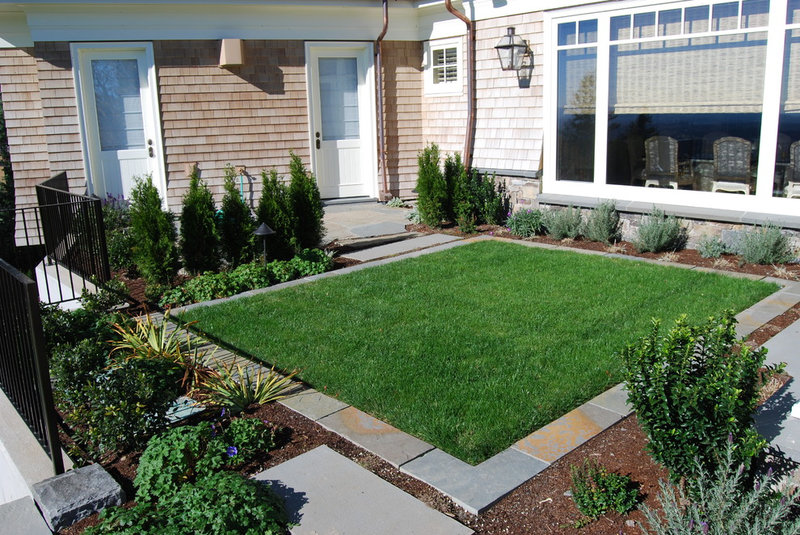 Samuel H. Williamson Associates
Materials and tools:
Samuel H. Williamson Associates
Materials and tools:- Soil test
- Sod cutter
- Hoe
- Tiller
- Hard rake
- Spreader
- Soil amendments
- Fertilizer
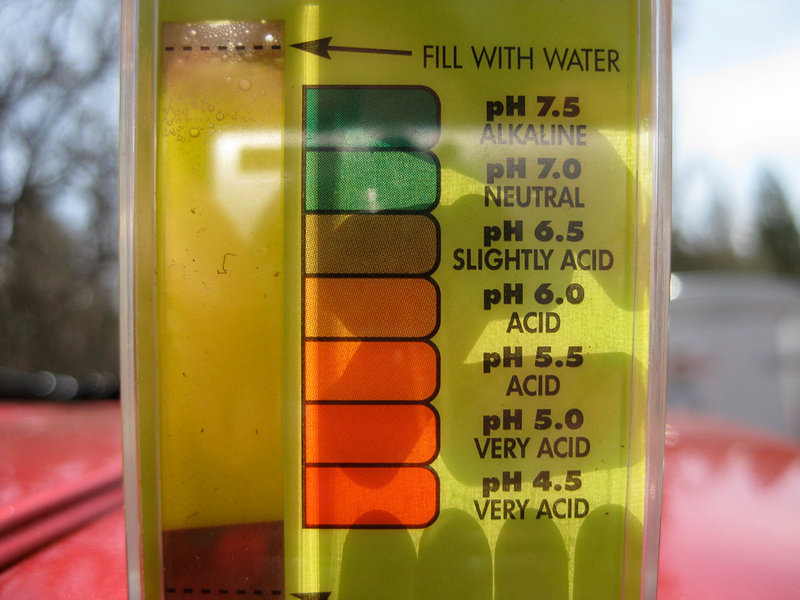 How to Prep for Gainesville Sod Installation
How to Prep for Gainesville Sod Installation1. Test your soil. The only way to find out what's in your soil (and what's not) is to test it. For about $20, you can have a sample of your soil tested at the Alachua county extension office. There are basic kits available for you to run a test yourself, but your extension office will be able to give you more extensive information about what's going on with your soil, so it's money well spent. It takes about 2-3 weeks to get the results back for Gainesville lawns.
A good soil test will tell you what your soil pH is; what kind of soil texture you have; the relative amounts of nitrogen, phosphorus and potassium (N-P-K); and amounts of other minerals like calcium, iron, magnesium and copper. Once you have this information, you can amend your soil properly to prepare it for your new lawn, as well as set up a proper Gainesville Lawn Fertilization Program too.
Photo by Ryo Chijiiwa
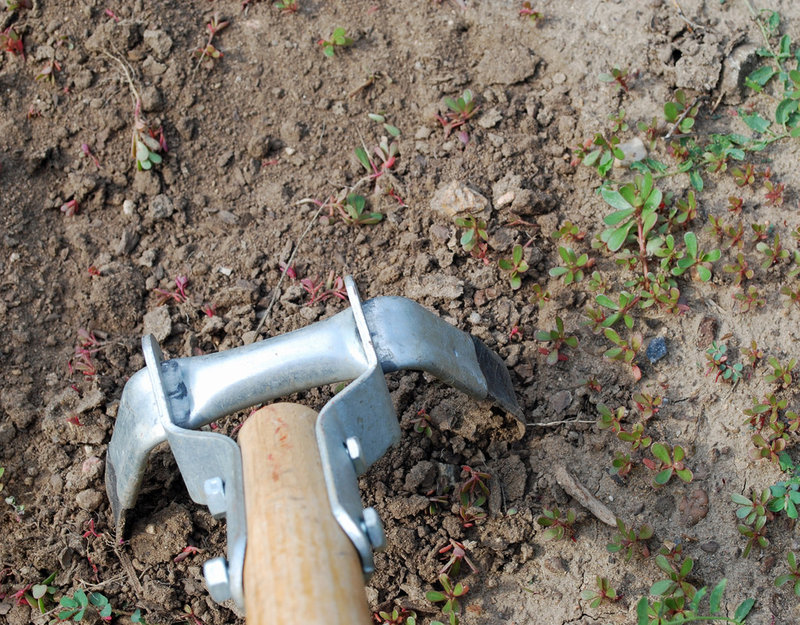 Jocelyn H. Chilvers
2. Remove existing grass, plants and weeds. Starting out with a clean slate is important — you don't want to spend time and money on a new lawn if you're simply placing it on top of a weedy field. The way you remove this unwanted material is up to you, and largely depends on how large the area is and what kind of plant material you'll be removing. For small areas with old grass and weeds, a hoe will work well, but for larger areas consider renting a sod cutter (typically $125 per day). If you have large plants (shrubs, woody perennials), remove them first and decide if you want to replant them in another area or toss them completely.
Jocelyn H. Chilvers
2. Remove existing grass, plants and weeds. Starting out with a clean slate is important — you don't want to spend time and money on a new lawn if you're simply placing it on top of a weedy field. The way you remove this unwanted material is up to you, and largely depends on how large the area is and what kind of plant material you'll be removing. For small areas with old grass and weeds, a hoe will work well, but for larger areas consider renting a sod cutter (typically $125 per day). If you have large plants (shrubs, woody perennials), remove them first and decide if you want to replant them in another area or toss them completely.
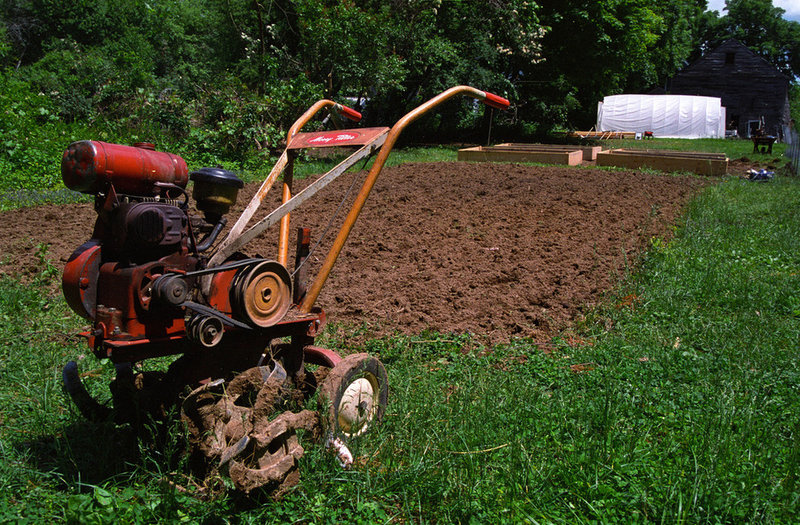 3. Loosen the soil with a tiller. This is an optional step, as there are a couple of schools of thought concerning tilling your soil. Some experts believe tilling is needed to thoroughly combine old soil with amendments; others believe tilling simply disturbs weed seeds and creates a mess. My recommendation is that if you have an area of very hard soil, it may make sense to break it up to a depth of 6 to 8 inches using a rear-tine tiller (typically $80 per day to rent) before adding your soil amendments, but otherwise feel free to omit this step.
3. Loosen the soil with a tiller. This is an optional step, as there are a couple of schools of thought concerning tilling your soil. Some experts believe tilling is needed to thoroughly combine old soil with amendments; others believe tilling simply disturbs weed seeds and creates a mess. My recommendation is that if you have an area of very hard soil, it may make sense to break it up to a depth of 6 to 8 inches using a rear-tine tiller (typically $80 per day to rent) before adding your soil amendments, but otherwise feel free to omit this step.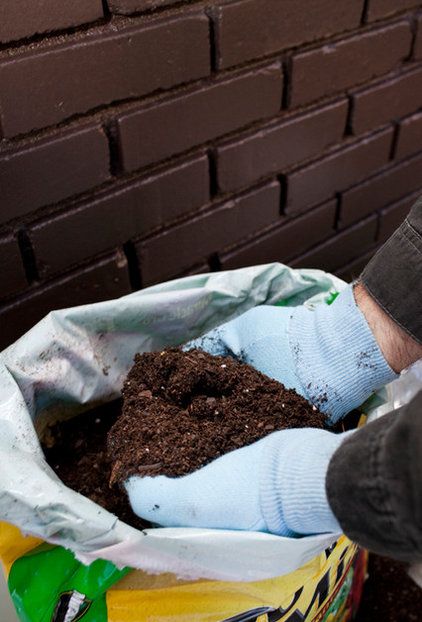 decordemon
4. Add milorganite. All soils, regardless of the results of a soil test, can benefit from a heavy application of milorganite. This is a organic addition of nutrients that will help your soil consistently feed your new sod's roots for months, if not years.
decordemon
4. Add milorganite. All soils, regardless of the results of a soil test, can benefit from a heavy application of milorganite. This is a organic addition of nutrients that will help your soil consistently feed your new sod's roots for months, if not years. You can also add other soil amendments, like sand, to break up clay-like soils. Soil amendments address the soil's physical condition (texture, ability to drain), and are not to be confused with fertilizers, which address the nutrient levels in the soil.
 5. Add fertilizers and rake smooth. Depending on the results of your soil test, you may opt to add some starter fertilizers to get your lawn off to a good start. Your soil test should make some recommendations on what to add to bring your particular soil up to healthy nutrient levels; look for a lawn starter fertilizer with those ingredients. If you have any questions, be sure to ask your county extension office for clarification to avoid performing any unnecessary tasks or steps. Be sure to ask your sod farm if they have any fertilizers on the sod as well. Double nitrogen can kill a lawn quicker than any chinch bug or lawn disease ever has.
5. Add fertilizers and rake smooth. Depending on the results of your soil test, you may opt to add some starter fertilizers to get your lawn off to a good start. Your soil test should make some recommendations on what to add to bring your particular soil up to healthy nutrient levels; look for a lawn starter fertilizer with those ingredients. If you have any questions, be sure to ask your county extension office for clarification to avoid performing any unnecessary tasks or steps. Be sure to ask your sod farm if they have any fertilizers on the sod as well. Double nitrogen can kill a lawn quicker than any chinch bug or lawn disease ever has. Use a spreader to add the fertilizer evenly, and then use a hard rake to evenly smooth the surface of your soil. You'll want the soil to be about 1 inch below grade to allow for the height of the installed grass. Make sure your soil surface is free of "hills and valleys," which will make for a lumpy lawn and a less-than-professional appearance.
 Koch Architects, Inc. Joanne Koch
Plant sod as soon as possible after finishing your prep work. The longer your unplanted soil is bare, the quicker weeds will once again stake their claim.
Koch Architects, Inc. Joanne Koch
Plant sod as soon as possible after finishing your prep work. The longer your unplanted soil is bare, the quicker weeds will once again stake their claim.Special considerations:
- Don't skimp on soil preparation when planning for a new lawn — although you won't see the specific materials in the end, a healthy lawn will be your reward.
- Always use sod that is recommended for use in your Gainesville lawn and your sunlight levels.
